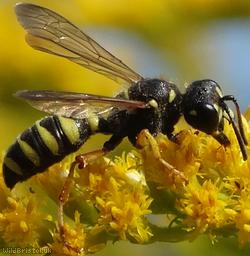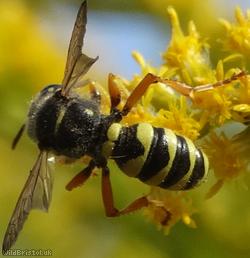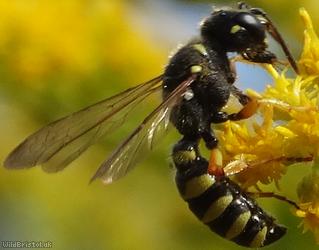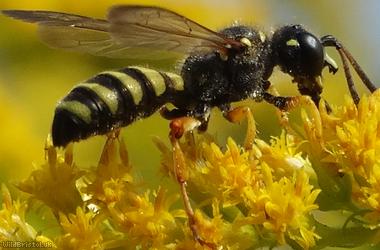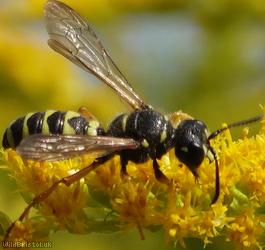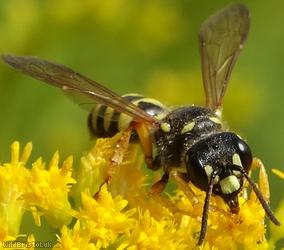Flange-faced Weevil Wolf - Cerceris ruficornis
Favourite Photos
Species Description
Widespread and locally common in the South, mainly along coasts. Habitat includes: Sandy places such as heaths, coastal cliffs etc. Flight period: Mid-June to late September. Diet: Larvae = Beetles from the families: curculionids, Chrysomelidae, Adults = Nectar and pollen from various flowers. I've recorded it on Canadian Goldenrod. It seems to be attracted to yellow flowers it probably frequently uses Ragworts, Groundsels and Fleabanes. Threats: Habitat loss. ID: Very similar to C. quinquefasciata. Females are identified by the yellow markings on tergid 1 where they meet. In C. ruficornis they are curved compared to the more triangular shape of C. quinquefasciata. If seen face on quinquefasciata has a yellow circular marking on either side of the bottom of the face between the eyes and the nose and just below the top two markings. These are absent in ruficornis. Ruficornis also has more orange looking legs whereas quinquefasciata has more yellow looking legs.
